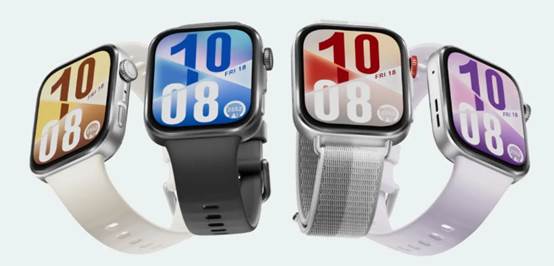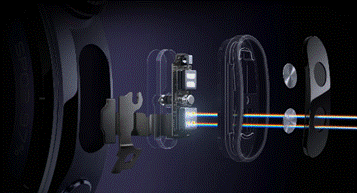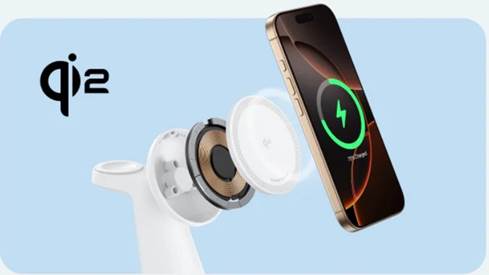Smartwatches
are becoming indispensable companions by 2025, combining enhanced health
monitoring, seamless connection, and tailored experiences. With features such
as non-invasive glucose tracking, improved battery life, and connection with
smart home ecosystems, these gadgets are quickly becoming vital tools in
everyday life. The market is seeing an increase in customization choices,
allowing customers to adapt their gadgets to their individual interests. As
technology progresses, smartwatches become more convenient while also playing
an important role in proactive health management and lifestyle improvement.
This year has seen a huge advancement in wearable technology, altering how
consumers interact with their gadgets and the environment around them.
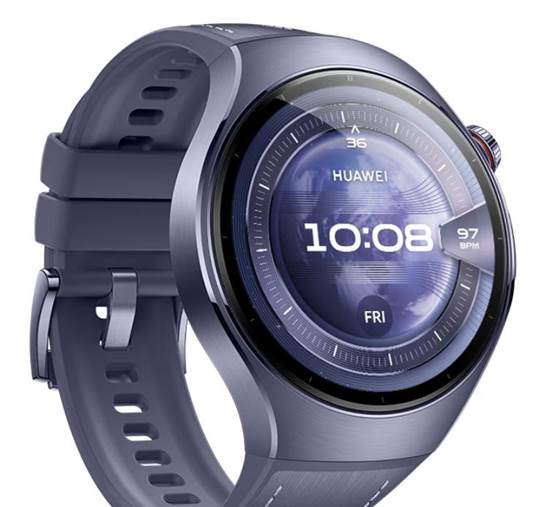
What Will Define the Smartwatches of 2025?
Extended Battery Life and Energy Efficiency
Users
of smartwatches have always been concerned about battery life. In 2025,
manufacturers solved this issue by providing energy-efficient processors and
solar charging capabilities. These innovations lower the frequency of charging,
hence improving customer convenience. Furthermore, smartwatches increasingly
use low-power modes and optimized software to save energy while maintaining
functionality. This emphasis on energy conservation not only improves the user
experience but also fits with consumers' growing environmental conscience.
Enhanced Health Monitoring Capabilities
In
2025, smartwatches will evolve into full health monitoring gadgets. They now
include non-invasive blood glucose monitoring, cuffless blood pressure
tracking, and advanced heart health sensors that can identify problems such as
atrial fibrillation. Sleep tracking has also advanced, with gadgets that
analyze sleep patterns and diagnose diseases like sleep apnea. AI algorithms
fuel these health characteristics, providing individualized insights and
recommendations. Smartwatches, which provide real-time health data, enable
users to take proactive actions to manage their well-being, making them
invaluable tools for both fitness fanatics and people with chronic health
concerns.
Seamless Integration with Smart Home Ecosystems
Smartwatch
integration with smart home ecosystems has grown more frictionless by 2025.
Users can now manage lighting, thermostats, security systems, and other IoT
devices directly with their wrists. Improved communication features such as 5G
compatibility, as well as better Bluetooth and Wi-Fi capabilities, help to
accomplish this. Smartwatches also work with virtual assistants such as Google
Assistant, enabling voice-controlled home automation. This level of
connectivity streamlines daily tasks and improves convenience, establishing
smartwatches as important hubs in the networked smart home.
Which Features Are Shaping Consumer Demand?
Customization: From Straps to Interfaces
Customer
demand in 2025 will mostly be driven by personalizing. These days, smartwatches
provide a great variety of customization choices, including modular components,
interchangeable bands, and bespoke watch faces based on modular elements. Users
may personalize their devices to fit their own tastes and needs for utility.
This inclination also applies to software, where users may personalize widgets
and interfaces to give the most critical information and capabilities top
priority. Customizing not only increases user satisfaction but also reflects a
greater trend in wearable technology toward consumer-centric design.
Voice and Gesture Control Improvements
In
2025, advancements in voice and gesture control will dramatically increase user
interaction with smartwatches. Enhanced natural language processing offers more
accurate and responsive voice commands, allowing users to easily send messages
or manage smart home devices. Gesture recognition technology has also advanced,
allowing for intuitive control using hand movements without touching the
device. These enhancements contribute to a more smooth and accessible user
experience, particularly for people with mobility issues or those who prefer
hands-free operation in a variety of situations.
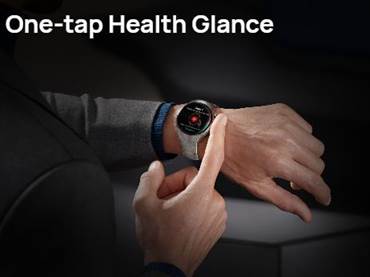
Conclusion
In
2025, the wristwatch environment will see substantial breakthroughs in health
monitoring, energy efficiency, connectivity, and personalization. Devices such
as the huawei Watch 5 illustrate these trends by combining functionality and elegance.
Smartwatches are becoming increasingly useful in everyday life, serving as
health monitors, communication tools, and smart home controllers. The emphasis
on user-centric design and creative functionality ensures that smartwatches
will continue to be at the forefront of wearable technology, adapting to
people's different requirements and tastes in an increasingly connected world.

